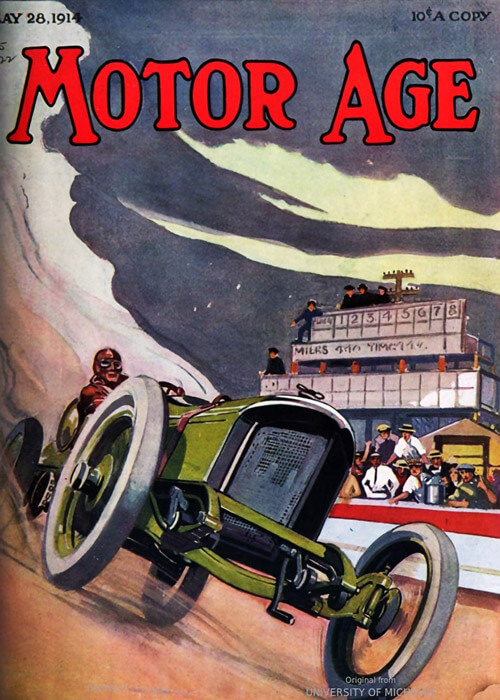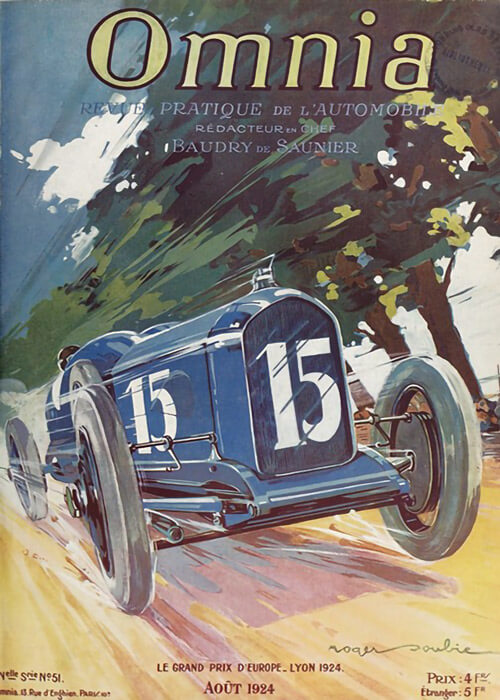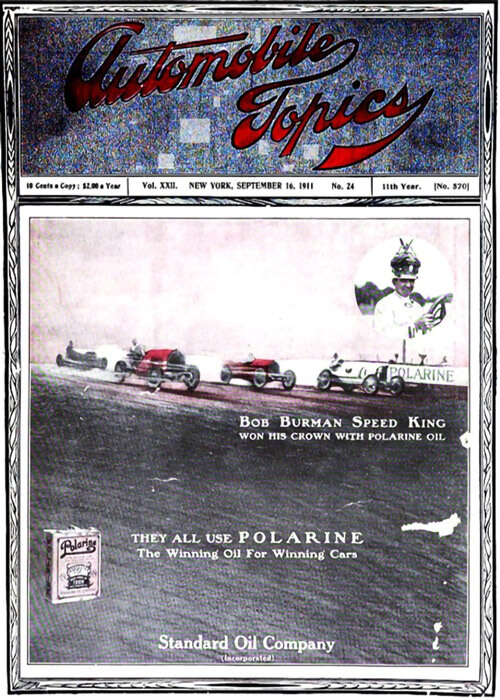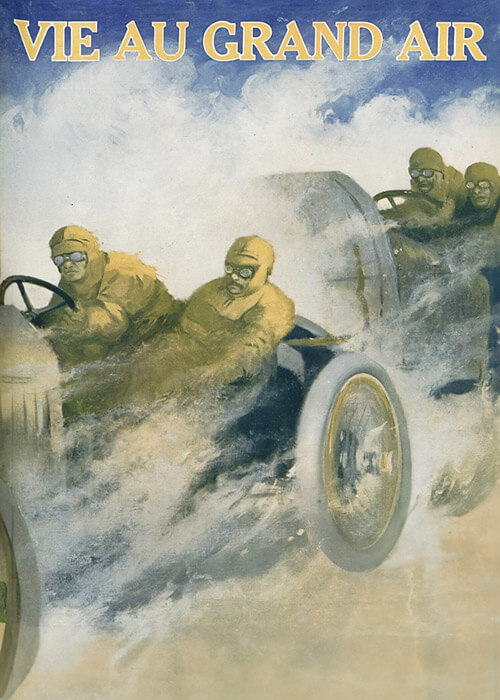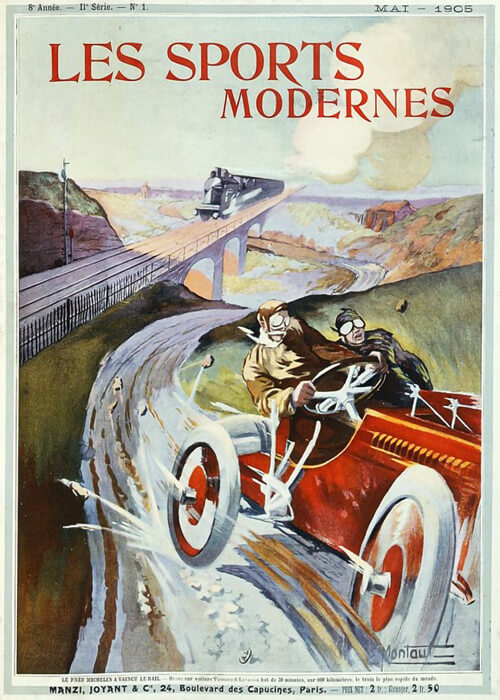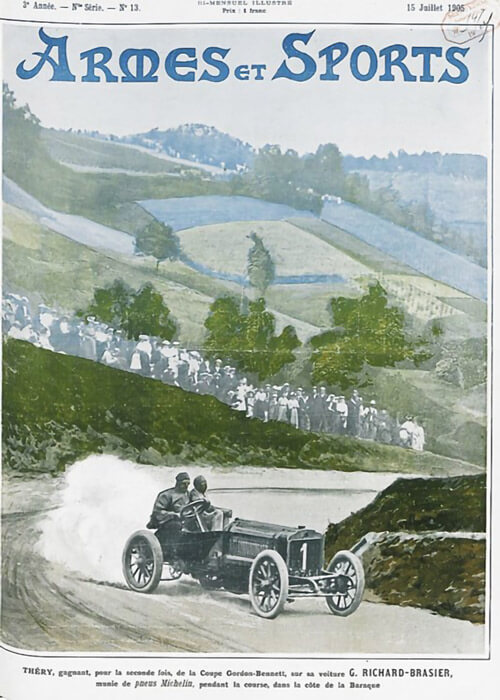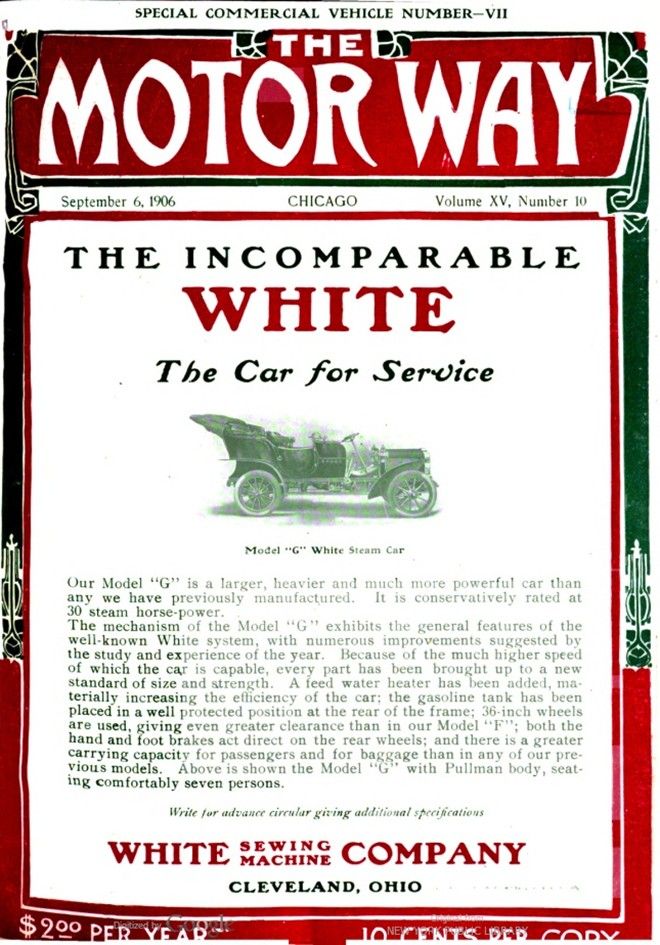


Text and pictures with courtesy of Hathitrust.org hathitrust.org; compiled by motorracinghistory
THE MOTOR WAY Vol. XV, No. 10, September 6, 1906
VANDERBILT CUP PREPARATIONS
This year the Vanderbilt will be the only truly international road race. Perhaps on that account, or perhaps on account of the increased interest in road racing in the United States, there is a spirit of earnestness among Americans as well as foreign manufacturers that far surpasses anything of the kind in preparation for either of the two previous contests on Long Island. A considerable fortune has been set aside by American manufacturers in their preparations. It is estimated that the amount expended by the eleven manufacturers in the elimination trial, reaches $350,000; this provides for the entry of fifteen cars.
The greatest outlay has been made by E. R. Thomas, who has appropriated $100,000 to his attempt to win the cup. Three of the most powerful machines ever constructed in this country have been built at a special factory at Buffalo. He has brought over from France the two experienced drivers Caillios and Le Blon at considerable expense.
Joe Tracy, who it will be remembered, finished third in the race for the cup last year, will be one of the first drivers on the Long Island course. A new car, the horsepower of which is estimated at 90, has been constructed for him. The motor is 74-inch bore, by 6-inch stroke, make and break ignition, with low-tension magneto. The admission-valves are located on the top of the cylinders in aluminum housings and are operated by walking beams, the tappets for which, are given vertical motion by cams on the admission camshaft, which is enclosed and gear-driven. The ignition cams are also located on the admission camshaft. The pump and magneto are on the exhaust side of the motor. They are driven by a shaft which is geared to the exhaust camshaft. The timing device is located close to the dash so that it may be easily reached by the mechanism. The transmission provides three speeds ahead and a reverse. The third speed gives direct drive to the double side chains to the rear wheels. The running brake acts on the differential shaft and is actuated by a foot pedal. The other brake is on the large drums, attached to the rear wheels, and is actuated by hand lever.
The car throughout is an enlarged edition of the Locomobile 35-horsepower car, except that the valves are located on the top of the cylinders, to save weight. A duplicate of the car will be held in reserve.
Assistant Manager C. W. Spencer, of the Pope company’s New York branch, returned to this city yesterday from Toledo. He saw the 120-horsepower car that Lytle is to drive, while there, and had this to say about it:
„I saw the car run at the rate of 81 miles an hour on the third speed, the fourth not having been tried yet. It is a wonderful car in its strength, speed and flexibility. It has a big gas tank in the back, mechanically operated valves, four speeds ahead of the selective type, footbrake on the jackshaft and a Remy magneto. When the engine is running the smoke is puffed out in great rings and one can feel the exhaust 10 feet away.
Since the Christie front-drive racing car is not the novelty that it was, the Maxwell 12-cylinder, will undoubtedly create the biggest sensation by its appearance. The car was put on the road at Tarry- town, N. Y., last Friday. The most unusual features of its construction other than the twelve cylinders are the absence of a flywheel and the cooling system.
While the position of the two radiators, one each side of the forward frame, is striking and new in American racing cars, the real novelty in connection with the radiation is not only that no water pump is used, but there is not even the double pipe gravity feed sys- Instead of the heretofore accepted methods of circulating the water, each cylinder head, at a point over the exhaust valves, has a short length of pipe, of large area, running straight up to the bottom of the cooler. The order of explosions in the order of cylinders along one side and commencing at either end of the battery of 12 cylinders, is I, II, 3, 7, 5 and 9. and on the other side, commencing at the same end, 10, 2, 12, 4, 8 and 6.
T The drive is through a multiple disc clutch and propeller shaft with a bevel pinion, to the bevel gear on the rear shaft, and without a differential.
There are two speeds and a reverse, the casing for the crank, clutch and change gears being in one straight through aluminum casting, carried on a three point suspension. The ratio of drive is I to 12. Wire wheels are used 34 by 4 front and 34 by 42 rear. The wheel base is 115 inches, and the tread is standard, 56½ inches.
Detailed descriptions of all the cars entered in the elimination trial, which up to this time have been held secret by the manufacturers, will be available soon.
The grandstand this year will be probably larger than last year, as then all the space was sold much in advance of the races to the different motor clubs throughout the country. Reservations are already pouring into Alfred Reeves, 29 West Forty-second street, New York, who has charge of the stand. The Haynes Automobile Company, of Kokomo, Ind., which entered for the Vanderbilt cup race in 1905, and whose car made a decidedly good showing in the elimination race, is again expected to have its 1907 Vanderbilt racer well up in front among the leaders in this year’s elimination race on September 22. Like last year, the Indiana company decided to entering one of its 1907 stock cars, fitted only with a specially built racing car body. The car, when ready for road use, weighs 2,194 pounds. Its 50-horsepower motor has cylinders having 54-inch bore and 6-inch stroke and the engine is rated to develop more than 75 miles per hour at 1,200 revolutions per minute. The car was designed by Elwood Haynes, but will be driven in the race by John W. Haynes.
On being asked why he did not build a car of greater horsepower, like most of the other manufacturers, Mr. Haynes stated that he believed the car entered would average a very high rate of speed for the entire distance of the race; that primarily the object of a race of the kind of the Vanderbilt is to develop the motor car industry and he thinks that the purpose is best served by entering a machine of the regular stock class and proving its worth, rather than a specially built racing car that has no more resemblance to the maker’s stock cars than a single- cylinder runabout has to a four-cylinder touring car. Mr. Haynes predicts that his Haynes car will be able to prove that it has the speed necessary to make a good showing in a race of this kind and strength to withstand the strains.
Photo captions.
Page 2. A VANDERBILT RACER IN THE MAKING
TESTING 8-CYL ENGINE OF THE TYPE THAT IS TO FURNISH THE MOTIVE POWER FOR THE MAXWELL BRISCOE MOTOR CO CUP CANDIDATE
Page 3. NEW HEMPSTEAD TURNPIKE (PHOTOS BY SPOONER)
THE VANDERBILT CUP COURSE ROAD – – – SHOWS CIRCUIT FOR 1905. _____ SHOWS CIRCUIT FOR 1906
Page 4. GLEN COVE INTO OLD WESTBURY – INTO OLD COURT HOUSE ROAD
Page 5. EAST NORWICH TURN – INTO LAKEVILLE ROAD – JERICHO TURN INTO OYSTER BAY
